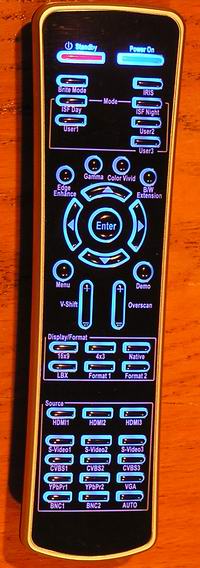- Optoma HD81-LV Home Theater Projector Review: Overview
- Optoma HD81-LV Home Theater Projector: Physical Tour
- Optoma HD81-LV: 1080p Home Theater Projector Review - Image Quality
- Optoma HD81-LV home theater projector: Sharpness
- Optoma HD81-LV Brightness and Ambient Light
- Optoma HD81-LV Overall Picture Quality
- Optoma HD81-LV Overall Picture Quality1
- Optoma HD81-LV Screen Door and Rainbow Effects
- Optoma HD81-LV Lamp Life and Replacement
- The Optoma HD81-LV Projector Review - Warranty
- Home Theater Projector Reviews: Optoma HD81-LV DLP Projector: Summary, Pros, Cons1
- Optoma HD81-LV Projector Specifications
- Home
- All Reviews
- By Category
- By Manufacturer
- Best Projectors for 2024
- Best 4K Projectors for 2023
- Best Laser TVs For 2023
- Best Short Throw Projectors For 2023
- Best Gaming Projectors For 2024
- Best Home Theater Projectors For 2024
- Best Bright Budget-Friendly Outdoor Projectors
- Best Battery Powered Outdoor Projectors
- Best Outdoor Projection Screens
- Best Projectors for 2024
- Industry News
- Reports
- Projector Manufacturers
- Manufacturer Terminology
- Manufacturers
- Recent Articles
- Custom Integration
- Projection Terms
- Projector Manufacturers Categories
- Videos
- Blog
Close
Menu
- All Reviews
- By Category
- By Manufacturer
- Best Projectors for 2024
- Best 4K Projectors for 2024
- Best Short Throw Projectors For 2024
- Best Projectors Under $1,000 For 2024
- Best Projectors Under $500 For 2024
- Best Laser TVs For 2024
- Best Gaming Projectors For 2024
- Best Home Theater Projectors For 2024
- Best Bright Budget-Friendly Outdoor Projectors
- Best Battery Powered Outdoor Projectors
- Best Outdoor Projection Screens
- Best Outdoor Projectors For 2024
- Best Projectors On Amazon In 2024
- Best Portable Projectors For 2024
- Best Projectors for 2024
- Latest News
- Reports & Guides
- Manufacturers
- Articles
- Custom Integration
- Projection Terms
close


